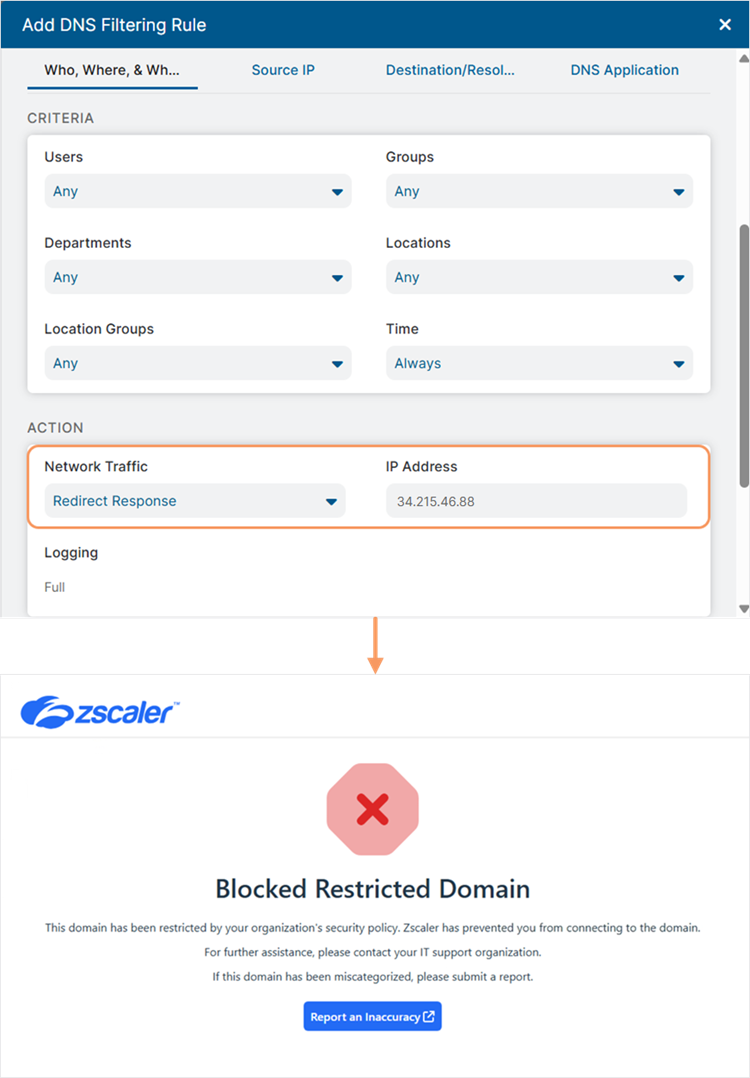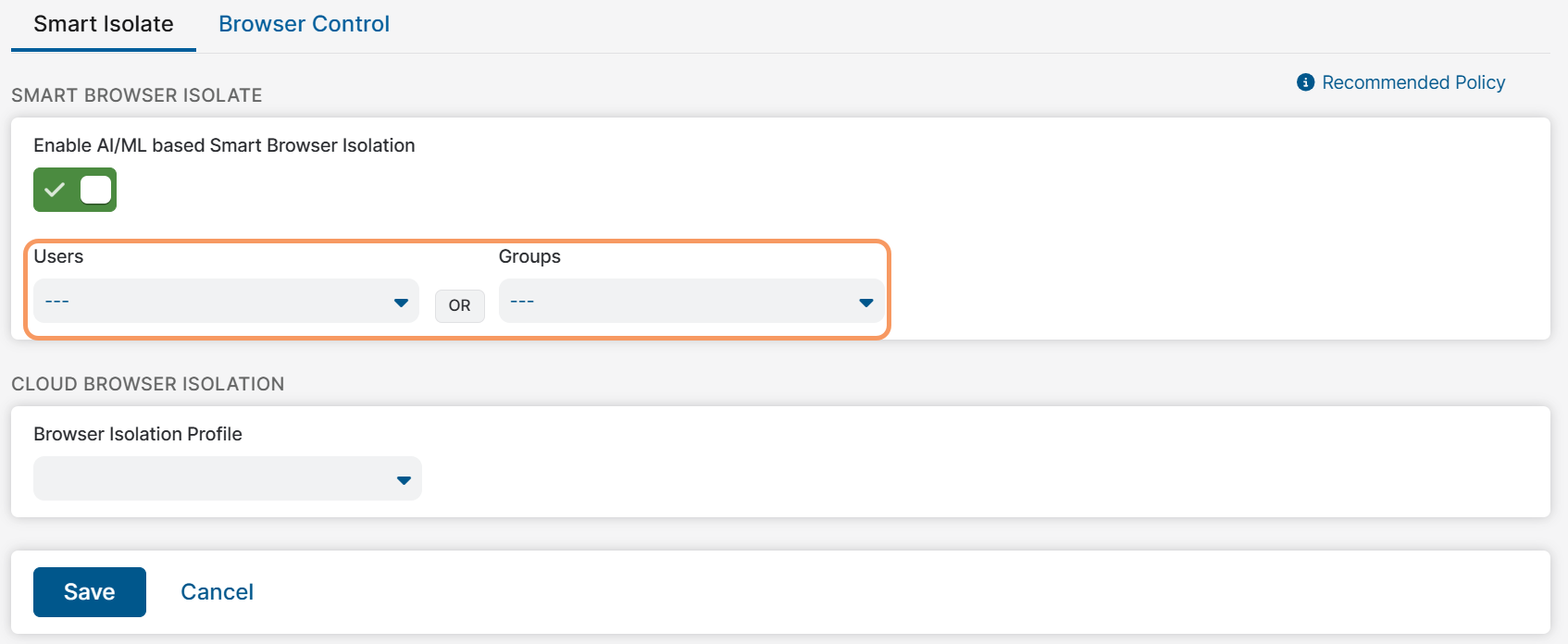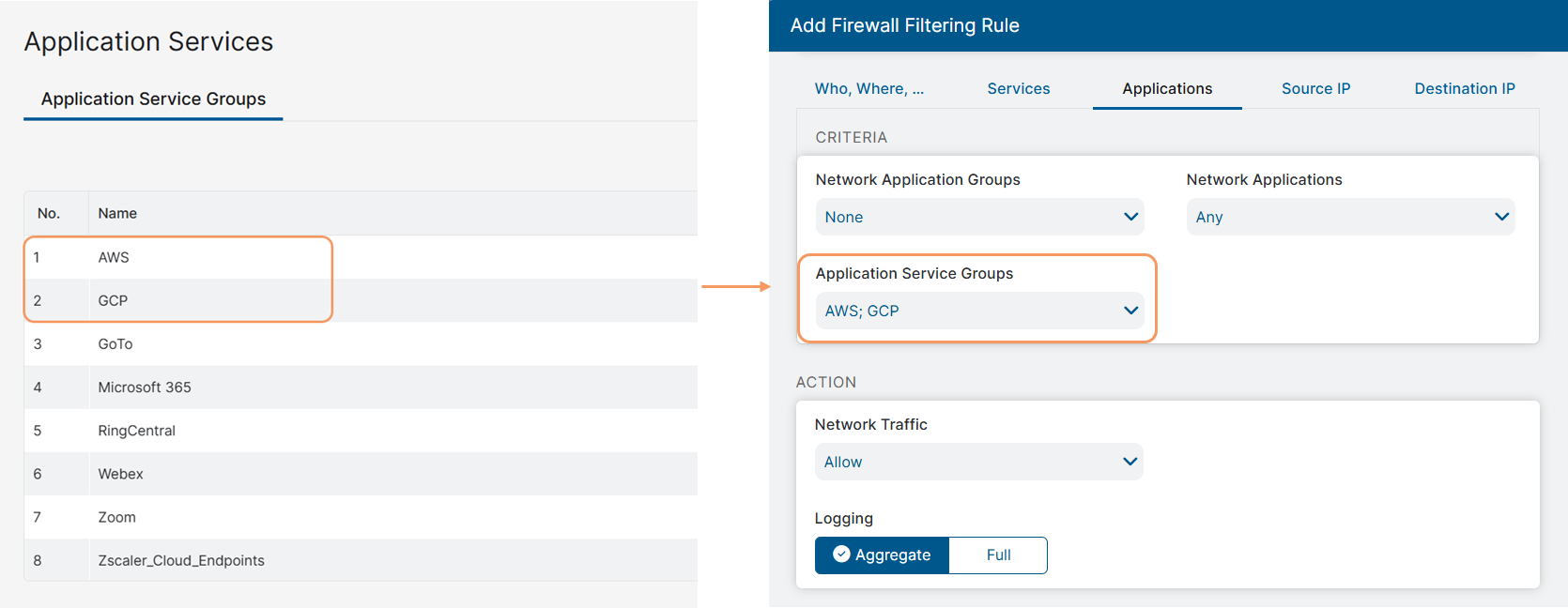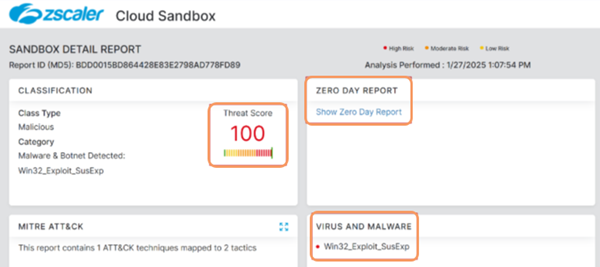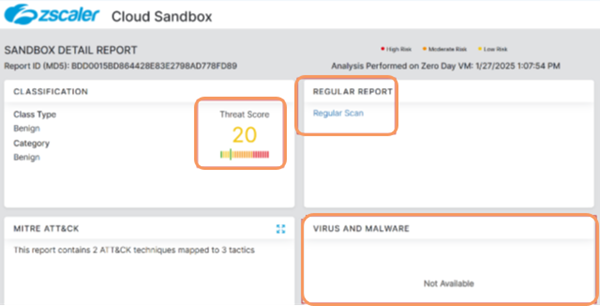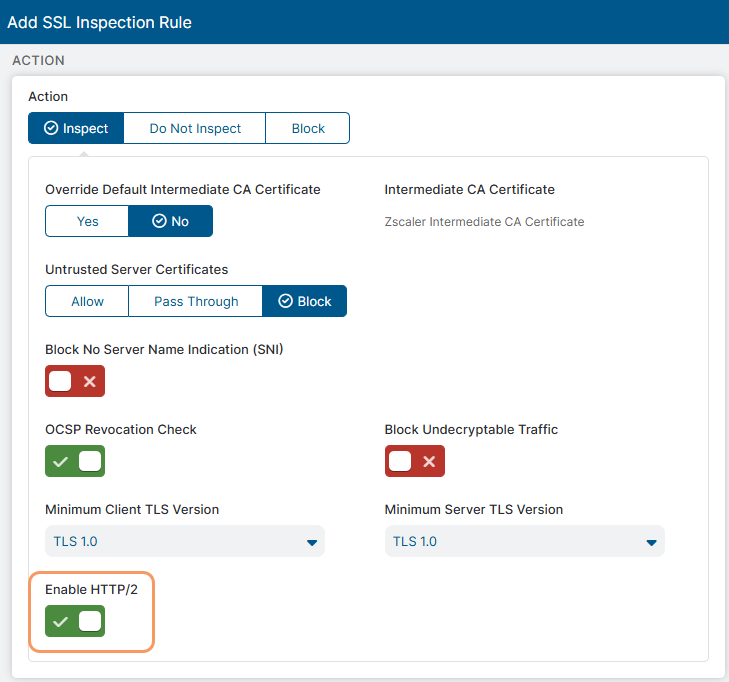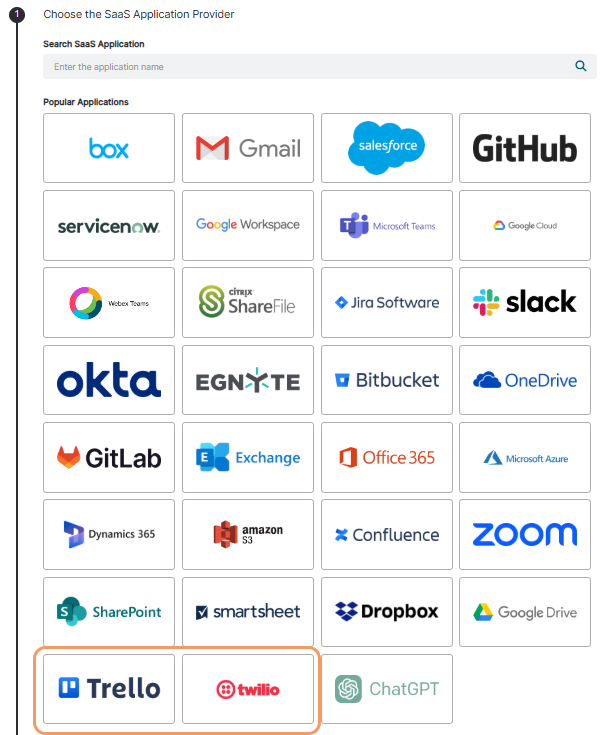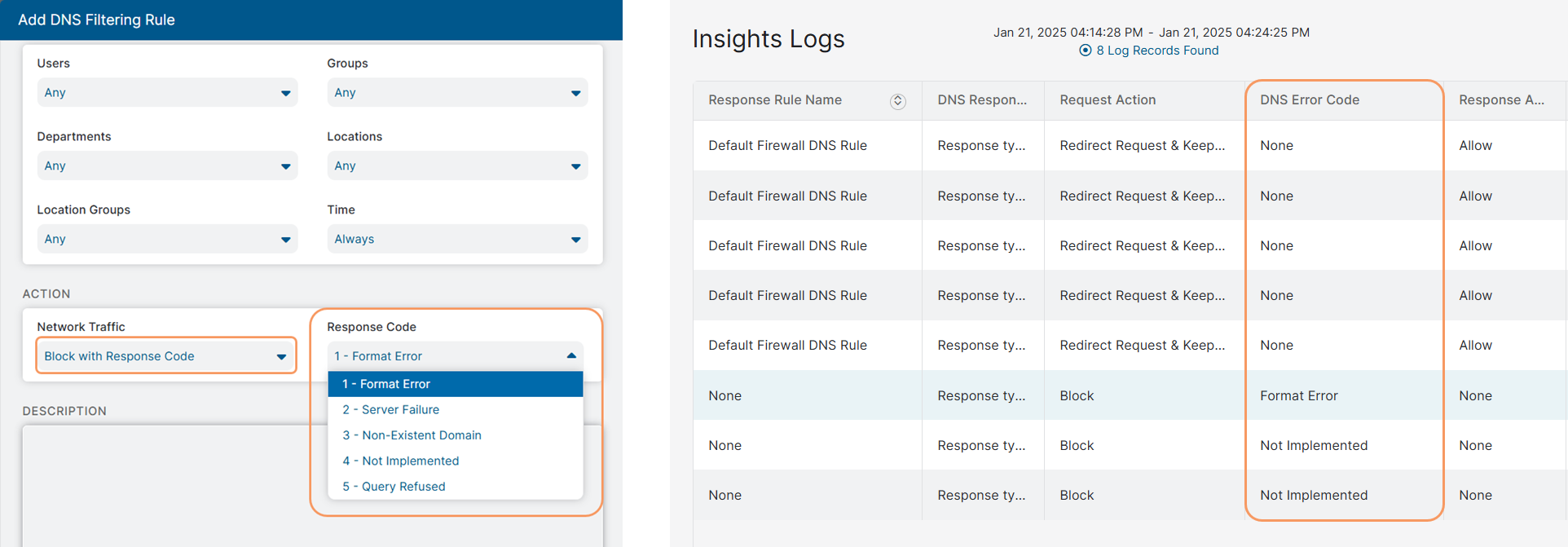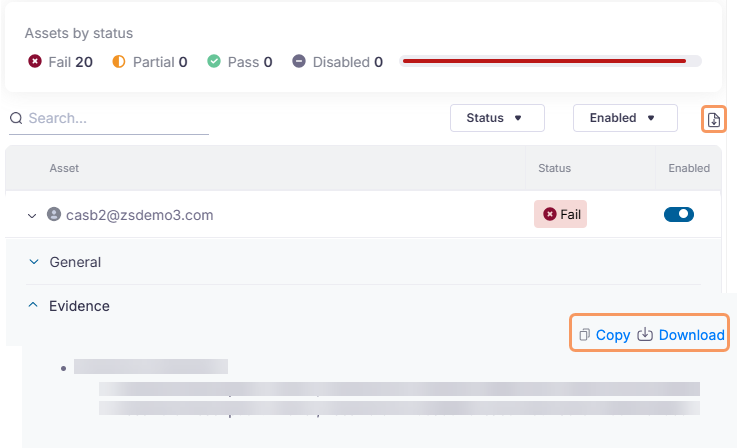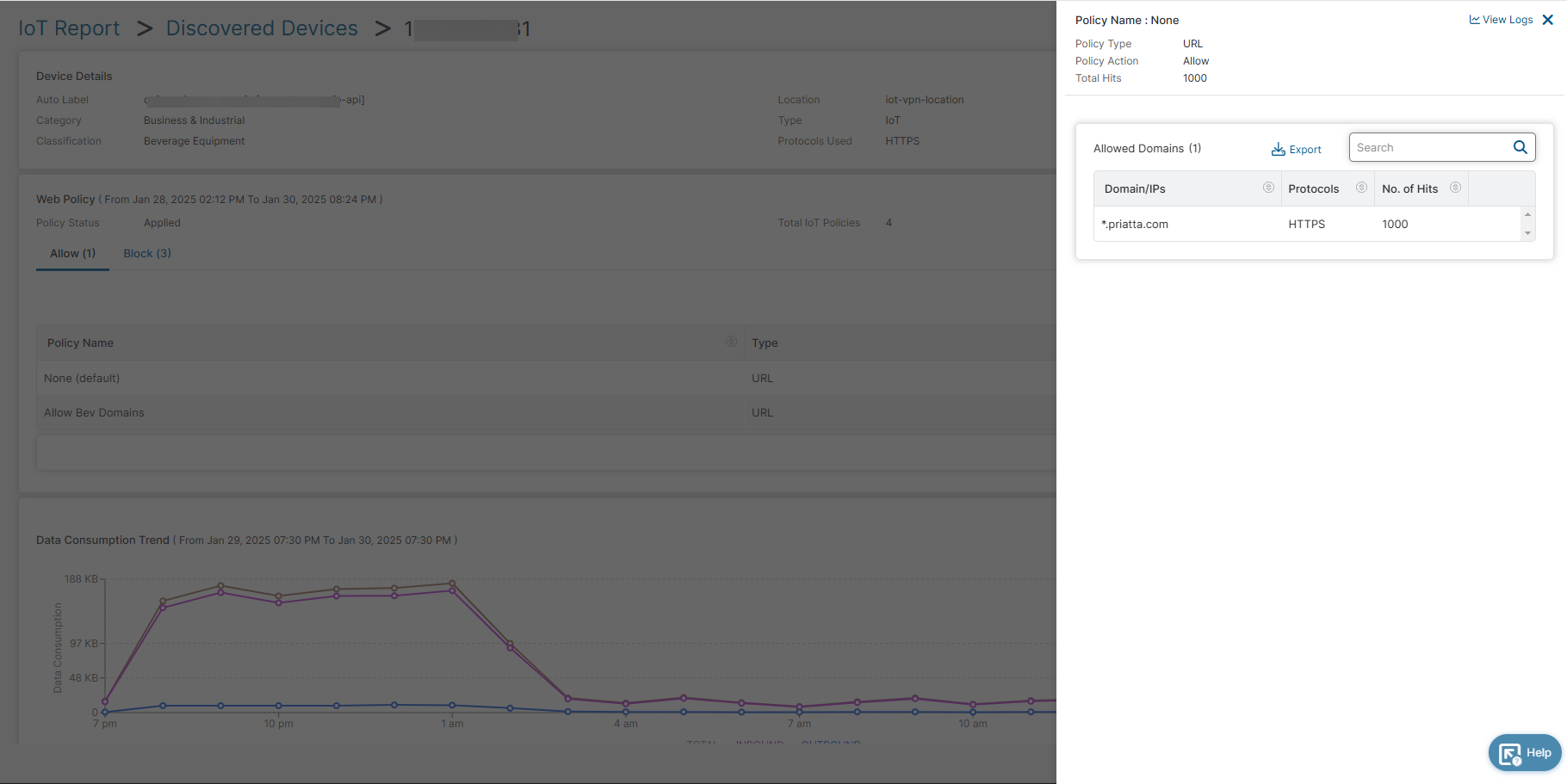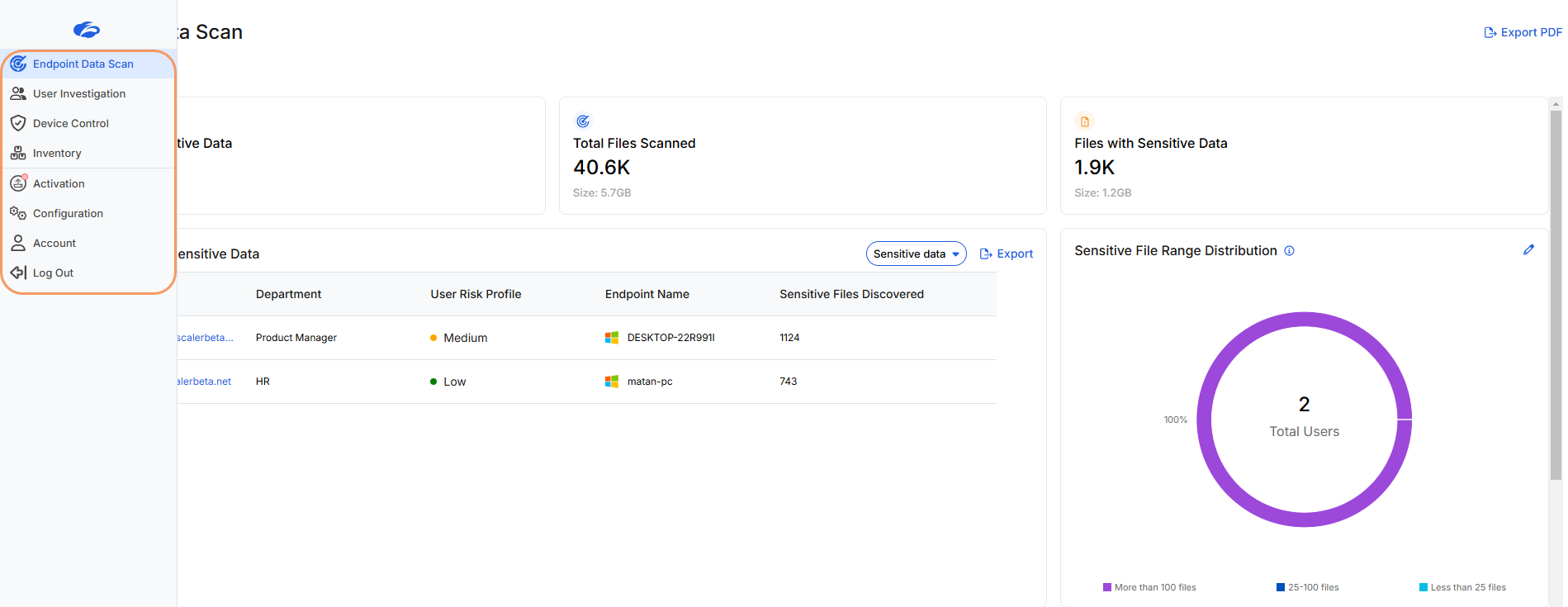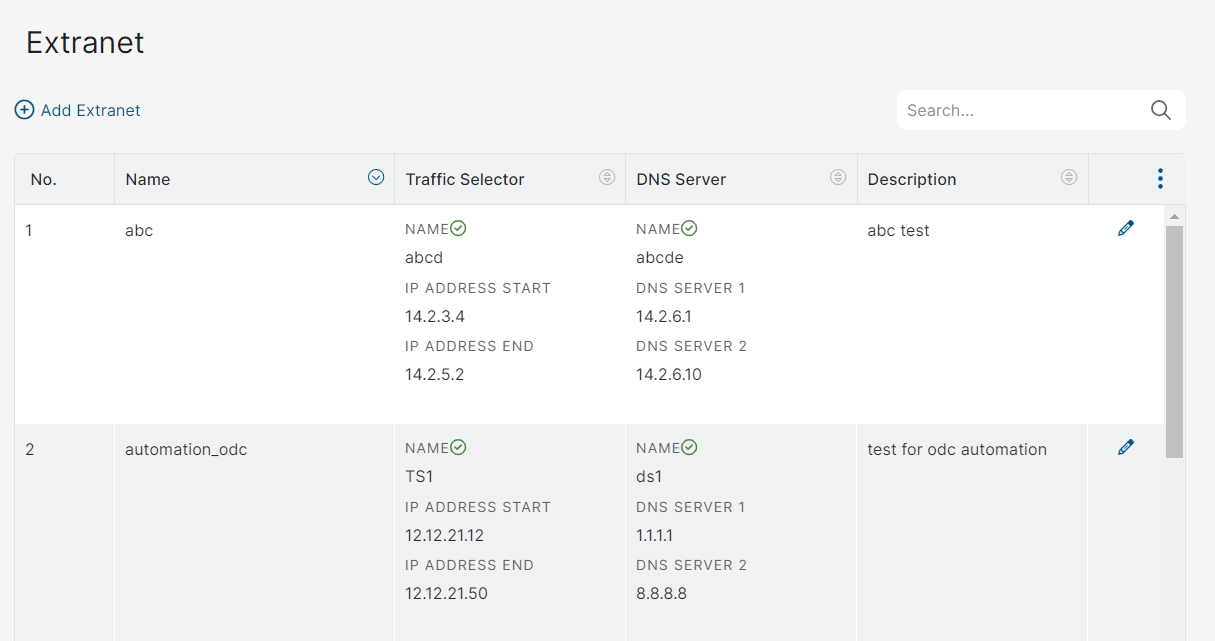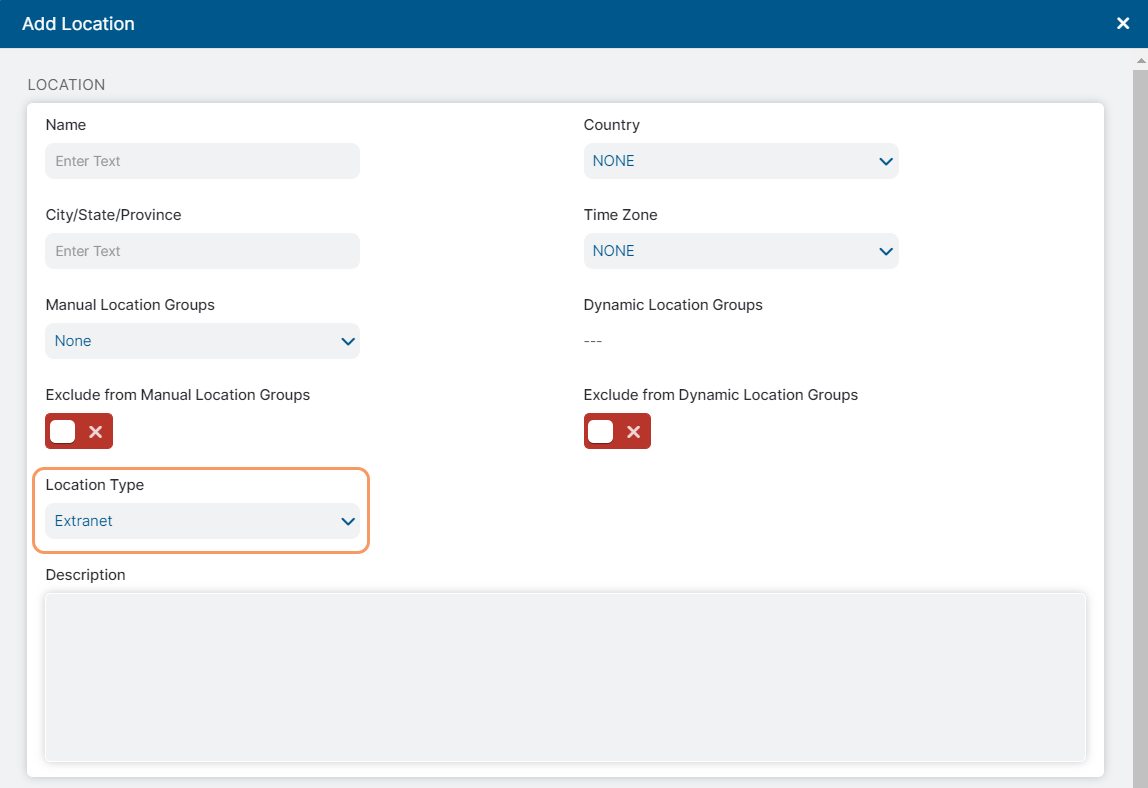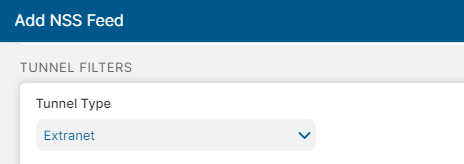Secure Internet and SaaS Access (ZIA)
Release Upgrade Summary (2025)
This article provides a summary of all new features and enhancements per Zscaler cloud for Zscaler Internet Access (ZIA). Zscaler will email a notification to your organization's registered support contacts approximately one week before your cloud is upgraded. To see scheduled maintenance updates for your cloud, visit the Trust Portal.
The following service updates were deployed to zscaler.net on the following dates.
- Feature Available
Update to Cloud Service API
To provide a unified and streamlined API experience through Zscaler OneAPI, our centralized API management solution for the Zscaler platform, Zscaler is applying the following changes to ZIA:
Going forward, the availability of the following endpoints within the ZIA cloud service API is limited to OneAPI only:
/adminRoles/departments/groups
However, GET operations for these endpoints will continue to be supported in the ZIA cloud service API as well as OneAPI.
- Zscaler is expanding the range of API endpoints available in OneAPI to allow more functions to be automated for the Zscaler platform. So, the availability of newly added ZIA cloud service API endpoints, such as
/configAudit, and any other endpoints added in future will be exclusively available via OneAPI.
Update to Cloud Service API
The cloud service API is updated to include a new
GET /locations/supportedCountriesendpoint that retrieves an up-to-date list of countries supported in location configuration.To learn more, see the API Reference.
Updates to Cloud Service API
The cloud service API includes updates to the following categories of endpoints to extend programmatic access to specific ZIA features and functionalities:
- Admin & Role Management
You can retrieve information about the current administrator or auditor user accessing the API using the new
CloseGET /adminUsers/meendpoint. - System Audit Report
You can retrieve the System Audit Report and the information available in specific report sections using the following endpoints:
GET /configAuditGET /configAudit/ipVisibilityGET /configAudit/pacFile
To learn more about each endpoint, see the API Reference and API Rate Limit Summary.
- Admin & Role Management
- Feature Available
Zscaler EUN Web Page for DNS Control Policy
Using the DNS Control policy, you can redirect users to a new Zscaler-provided end user notification (EUN) web page to inform users of your organization policy when they access restricted domains. You can do this by selecting the Redirect Response action in the DNS Control rule and by manually specifying the following IP address for the Zscaler-hosted notification web page:
34.215.46.88.To learn more, see Configuring the DNS Control Policy.
- Feature Available
DLP Support for New PII Dictionaries
The following are new predefined DLP Dictionaries:
- National Identification Number (Chile RUN)
- National Identification Number (Peru CUI)
- National Document ID (Uruguay)
To learn more, see Understanding Predefined DLP Dictionaries.
- Feature Available
Cookie Persistence Renamed to Persistent State for Isolation Profiles
In ZIA isolation profiles, the cookie persistence toggle has been updated to be called Persistent State.
To learn more, see Using Persistent State for Isolation and Creating Isolation Profiles for ZIA.
Enhancement to Secure Browsing
You can configure granular Smart Browser Isolation policies for specific users or groups from the Secure Browsing page. As part of this change, the following fields are added to the Smart Isolate tab (Policy > Secure Browsing > Smart Isolate):
- Users
- Groups
These fields appear only when the Enable AI/ML based Smart Browser Isolation option is enabled.
To learn more, see Configuring Smart Browser Isolation Policy.
Isolation of Miscellaneous and Unknown Category in ZIA
Isolation creates preconfigured profiles for admins. These profiles can configure only the URL category "Miscellaneous and Unknown" in their Zscaler Internet Access (ZIA) policy. Some fields in this profile are permanently enabled, others permanently disabled, and some the admin can edit.
To learn more, see Understanding Isolation of Miscellaneous and Unknown Category in ZIA and Creating Isolation Profiles for ZIA.
Update to Application Service Groups
The Firewall policy allows you to manage outbound and inbound traffic for cloud service providers such as Amazon Web Services (AWS) and Google Cloud Platform (GCP), along with their subservices, using the newly added AWS and GCP application service groups. These application service groups are defined using the metadata including IP addresses published by the respective providers to identify the traffic belonging to their services. Zscaler continuously updates and validates the latest IP addresses published by the providers, ensuring that organizations have the most up-to-date information for traffic identification and policy enforcement.
To learn more, see About Application Service Groups and Configuring the Firewall Filtering Policy.
- Feature Available
Multiple VM Sandbox Report Analysis
For Advanced Sandbox users, all malicious samples are analyzed twice automatically, first through an unpatched vulnerable VM (Zero Day Report or Fully Patched VM Report) and then a second time through the fully patched secured VM (Regular Report). This allows you to compare the report outputs to identify mitigation effectiveness and potential risk.
To learn more, see About Sandbox and Viewing Sandbox Reports and Data.
- Feature Available
Remote Assistance Notification
The Zscaler service displays a notification when Remote Assistance is enabled.
The maximum time limit for both view-only and full access is 90 days.
To learn more, see Enabling Remote Assistance.
Updates to Cloud Service API
The cloud service API includes the following new categories of endpoints to extend programmatic access to various ZIA features and functionalities:
- Admin & Role Management
You can create, update, and delete admin roles and retrieve a list of admin roles using the following endpoints:
GET /adminRolesGET /adminRoles/litePOST /adminRolesGET /adminRoles/{roleId}PUT /adminRoles/{roleId}DELETE /adminRoles/{roleId}
- User Management
You can create, update, and delete groups and retrieve a list of groups using the following endpoints:
GET /groupsPOST /groupsGET /groups/liteGET /groups/{groupId}GET /groups/lite/{groupId}PUT /groups/{groupId}DELETE /groups/{groupId}
You can create, update, and delete departments and retrieve a list of departments using the following endpoints:
GET /departmentsPOST /departmentsGET /departments/liteGET /departments/{id}GET /departments/lite/{id}PUT /departments/{departmentId}DELETE /departments/{departmentId}
- Traffic Forwarding
You can update a subcloud and retrieve information about subclouds using the following endpoints:
GET /subcloudsGET /subclouds/isLastDcInCountry/{id}PUT /subclouds/{id}
To learn more about each endpoint, see the API Reference and API Rate Limit Summary.
The Postman collection is also updated to include new and updated resources. To learn more, see Configuring the Postman REST API Client.
- Admin & Role Management
- Feature Available
DLP and EDM Support for PII
The existing predefined Credit Card dictionary and EDM data type now support the additional popular formats:
- Credit Card Number (China UnionPay)
- Debit Card Number (Maestro)
To learn more, see Creating an Exact Data Match Template and Understanding Predefined DLP Dictionaries.
Enhancement to HTTP/2 in SSL Inspection Policy
The Enable HTTP/2 option is enabled by default when configuring an SSL Inspection rule. This feature is only available when it is enabled for your organization.
To learn more, see About SSL Inspection and Configuring SSL Inspection Policy.
Support for New SaaS Application Tenants
Twilio and Trello are supported as SaaS application tenants. Both can only be configured for SSPM scan which requires an Advanced SSPM license. If you don't have the correct license, a message to upgrade your license appears next to the SSPM Scan checkbox during the onboarding process.
To learn more, see About SaaS Application Tenants and Adding SaaS Application Tenants.
Tenant-to-Tenant Firewall Control and Logging Improvements
Additional Firewall Control and Logging capabilities have been added for scenarios where an organization's roaming user (i.e., remote user from a Home tenant) is a guest user visiting another organization's tenant location (i.e., Host tenant) in the same Zscaler cloud and that Host tenant allows such guest users.
Update to DNS Control Policy
The DNS Control policy includes a new action, Block with Response Code, which allows you to block DNS traffic and send a response code to the client. The response code can be chosen from a predefined list that appears in a new Response Code field when this action is selected. When there is a policy match with the traffic, the transaction appears in DNS logs with the response code populated against the existing DNS Error Code column and the rule action is indicated by a "Block" value in the Request Action or Response Action columns.
To learn more, see Configuring the DNS Control Policy Action.
Update to Cloud Service API
The cloud service API is updated to include a new action value,
BLOCK_WITH_RESPONSE, and a newblockResponseCodeattribute for specifying the response code in theFirewallDnsRulemodel when theBLOCK_WITH_RESPONSEaction is used.To learn more, see the API Reference.
Zscaler Incident Receiver Configuration Enhancement
Zscaler now supports the SSH key, ED25519.
To learn more on upgrading the SSH key to ED25519, see Configuring the Zscaler Incident Receiver for On-Premises VMs, Configuring the Zscaler Incident Receiver for Amazon Web Services EC2 VMs, and Configuring the Zscaler Incident Receiver for Azure VMs.
- Feature Available
Enhancements to Assets Tab of the Control Panel in Advanced SSPM
The Assets tab of the Control Panel in Advanced SSPM includes the following enhancements:
- You can export the assets report to a CSV file.
- You can copy the asset evidence or download it as a JSON file.
To learn more, see About the Control Panel.
- Feature Available
Administrator Scope Department Limit
When configuring ZIA admins and super admins, the maximum number of departments that can be selected for an admin with Department Scope is increased to 2,048.
To learn more, see Ranges & Limitations.
Enhancements to the IoT Report
The IoT Report has been enhanced to report IoT policy status and statistics for IoT devices.
To learn more, see About the IoT Report.
You can get an overview of the IoT web policies status and deep dive into their action impact on IoT web communications, such as domains/IPs and the corresponding policy action statistics in the IoT Report > Discovered Devices > Selected IP Address.
To learn more, see About Discovered Devices.
Increase in Query Limit for Sandbox Report API
The resource access quota for retrieving Sandbox Detail Reports is increased to 3,000 requests per day, with a rate limit of 2/sec and 1,000/hour.
To learn more, see the Obtaining Sandbox Reports Using API and Sandbox Report articles.
Logs for Source and Destination IP Countries
You can filter and view logs for Source IP Countries, Destination IP Countries, Is Source IP Country Risky? and Is Destination IP Country Risky? As part of the update, the following changes are available in the ZIA Admin Portal:
Web Insights Logs
The following filters and columns are added to Web Insights Logs:
- Destination IP Countries
- Is Destination IP Country Risky?
- Is Source IP Country Risky?
- Source IP Countries
To learn more, see Web Insights Logs: Columns and Web Insights Logs: Filters.
NSS Feeds
The following fields can be added to the Feed Output Format when configuring an NSS or Cloud NSS feed for web logs:
%s{srcip_country}%s{dstip_country}%s{is_src_cntry_risky}%s{is_dst_cntry_risky}
To learn more, see NSS Feed Output Format: Web Logs.
Update to Cloud Service API
The cloud service API includes a new
POST /exportPoliciesendpoint for exporting rules configured for various policy types to JSON files.To learn more, see the API Reference.
The Postman collection has also been updated to include the new resource. To learn more, see Configuring the Postman REST API Client.
- Feature Available
Real-Time DLP Support for Files and Messages for Webex
Zscaler supports real-time Data Loss Prevention (DLP) for messages and file attachments sent via Webex Teams.
To learn more, see Step-by-Step Configuration Guide for Webex Teams Real-time DLP, About Insights Logs, and About SaaS Security Insights Logs.
Support for Case-Sensitive Logging for Select Domains
Zscaler supports case-sensitive URL logging for select domains. Some sites and services, such as URL shorteners, use case sensitivity within the URL path when generating links. For example,
bit.ly/ABcDEfhas a different destination URL thanbit.ly/abcdef. With added support for case-sensitive logging, URLs are stored in Web Insights Logs and NSS feeds for web logs with the original case retained.Case-sensitive logging is supported for, but not limited to, the following domains:
The list of domains is neither comprehensive nor complete and might expand over time. To obtain additional domains for specific use cases for case-sensitive URL support, contact your Zscaler Account team.
- adf.ly
- bit.ly
- bl.ink
- cutt.ly
- goo.gl
- link.ly
- ow.ly
- rebrand.ly
- snip.ly
- t.ly
- tiny.cc
- tinyurl.com
To learn more, see Web Insights Logs: Columns.
- Feature Available
Enhancement to Posture Controls Report in Advanced SSPM
When exporting the controls report to a CSV file from the Posture page, you can view additional attributes like Description, Tenant Name, Platform, Severity, etc. in the exported file.
To learn more, see About Posture.
- Feature Available
Enhancements to Endpoint DLP
Optical Character Recognition (OCR) Support
The Zscaler service supports OCR for Endpoint DLP to scan PNG, JPEG, TIFF, and BMP files for sensitive text data. This functionality does not require configuration and is automatically available based on whether your subscription includes the ZS-DP-CLASS-ADV SKU.
To learn more about which SKUs are available as part of your subscription, see Viewing Tenant Details.
The following enhancements are made to the Endpoint Data Scan page (Analytics > Endpoint Data Scan):
Endpoint Data Scan
You can filter and export users based on sensitive data stored locally. The exported data also includes additional file attributes like the Last Modification Time, Last Accessed Time and Creation Time columns.
User Investigation
The Analytics dashboard is enhanced to display a streamlined Timeline View which shows all user activities and incidents in chronological order. You can also view additional attributes by channel type, including the vendor ID, product ID, and serial number. You can also access detailed information about other matched rules when applicable.
Device Control
Zscaler Device Control enables your organization to regulate and monitor device (removable storage devices and printers) usage by implementing device control policy rules that restrict access and mitigate security risks. This is done by intercepting as soon as the device is plugged into the endpoint, thereby preventing exfiltration of sensitive information.
To learn more, see About Device Control, Managing Removable Storage Device Rules, and Managing Printer Rules.
Inventory
The Inventory provides visibility into the use of removable storage devices (e.g., USB drives, external hard drives), printers, and portable devices (e.g., mobile phones and cameras) within your organization. This functionality automatically detects the usage of these devices and displays permission access based on the device control policy. You can also analyze Endpoint Data Loss Prevention (DLP) activities and incidents from various perspectives, like departments, DLP engines, AI & ML categories, file type, etc. for each device.
To learn more, see About Inventory, Analyzing Device Details, Analyzing Printer Details, and Analyzing Portable Device Details.
Activation
From the Activation menu, you can view the activation status and activate any changes made to the Device Control Policy Rules and Endpoint Configuration Settings.
To learn more, see Activating Device Control Policy Rules and Configuration Changes.
Configuration
The Configuration menu allows administrators to configure endpoint data scan and other endpoint settings, such as continuous classification and endpoint DLP exemption duration.
To learn more, see Configuring Endpoint Data Scan and Endpoint Settings.
- Feature Available
Advanced SaaS Security Posture Management Support for Zoom
You can configure Advanced SaaS Security Posture Management (SSPM) for Zoom tenants. Select the SSPM Scan checkbox when onboarding a Zoom tenant to enable the Advanced SSPM scan capability for the specific tenant. Existing users can also enable Advanced SSPM support by selecting the SSPM Scan checkbox under the onboarding section for the specific tenants and then validating and saving the changes.
The SSPM Scan checkbox is enabled only when you have the Advanced SSPM enabled for your tenant.
To learn more, see About SaaS Application Tenants, Adding SaaS Application Tenants, Understanding the SaaS Security Posture Management Policy, and Viewing and Managing the Supported SSPM Policies.
- Feature in Limited Availability
Extranet Application Support
To access Extranet Application Support, contact your Zscaler Account team.
Zscaler Extranet Application Support provides organizations with a secure way to access resources from partners that are not using the Zscaler service. This is typically accomplished with site-to-site VPN tunnels which present organizational, financial, and security drawbacks. Zscaler Extranet Application Support provides access to partner resources through IPSec tunnels, retaining the benefits of the Zscaler Zero Trust Exchange (ZTE) without requiring partners to install hardware and software.
Extranet resources are created on the Extranet page. Each resource is configured with one or more traffic selectors and DNS servers.
Extranet resources must be assigned to locations in order to grant users access to the partner resource. Extranet is available as a Location Type when configuring locations.
Selecting Extranet as the Location type prompts the user to select an Extranet Resource, Traffic Selector, and DNS Server.
After extranet locations are configured in the ZIA Admin Portal, they become available in the ZPA Admin Portal when configuring server groups and application segments. You can configure ZPA access policies to manage extranet applications.
To learn more about Extranet Application Support, see Understanding Extranet Application Support, About Extranet, and Configuring an Extranet. Ranges and limitations for Extranet Application Support are listed on Ranges & Limitations.
Extranet Insights
With the new Extranet Insights (Analytics > Extranet Insights), you can view IPSec tunnel data, as well as monitor the health and status of your configured extranets.
To learn more about Extranet Insights, see About Insights, About Insights Logs, Extranet Insights Logs: Columns, and Extranet Insights Logs: Filters.
Tunnel Insights Logs
A filter and column, Extranet Name, is added to Tunnel Insights Logs.
To learn more, see Tunnel Insights Logs: Columns and Tunnel Insights Logs: Filters.
NSS Feeds
When configuring an NSS or Cloud NSS feed for Tunnel logs, you can select Extranet in the Tunnel Type filter to limit the logs based on this tunnel type.
To learn more, see Adding NSS Feeds for Tunnel Logs and Adding Cloud NSS Feeds for Tunnel Logs.
Update to Cloud Service API
The cloud service API includes new endpoints to configure and manage extranet resources. The following endpoints are introduced to retrieve the list of configured extranet resources and add, modify, and delete extranet resources:
GET /extranetPOST /extranetPUT /extranetGET /extranet/liteGET /extranet/{id}DELETE /extranet/{id}
In addition, the following attributes are added to the
Locationmodel to assign an extranet to a location:extranetextranetIpPoolextranetDnsdefaultExtranetTsPooldefaultExtranetDns
To learn more about each endpoint, see the API Reference and API Rate Limit Summary.
The Postman collection has also been updated to include new and updated resources. To learn more, see Configuring the Postman REST API Client.
